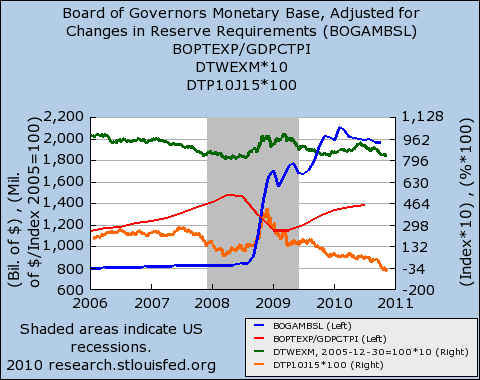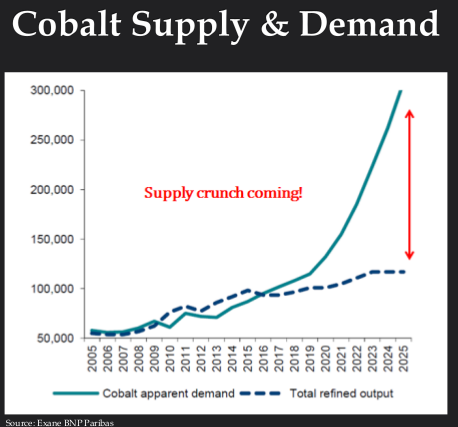Contents:


Modest-cap equities have low trading volumes, which are often quite low. Axis Bank, SBI, Hero Motocorp Infosys Computers ITC Cigarettes, Maruti Suzuki Kotak Mahindra, are some of the examples of large-cap stocks. Large caps are trustworthy, reputable and strong companies with well-established players with a proven track record. Growth.By the time companies become large-caps, the biggest gains in their history may already be over. By this point, however, they are more likely to begin acquiring other companies to expand their businesses, including those in the small-cap space.

These companies have the potential to become a large cap in a few years and have enough finance to survive harsh economic conditions. There is no hard and fast way rule to define the classification of the companies based on the market capitalization. If you refer to different financial websites, the range of market cap will vary for different capitalization. However, in general, here is the commonly accepted classification of companies based on the market capitalization in Indian stock market. Small-cap companies have the most potential for growth compared to mid-cap and large-cap companies. They have cheaper share prices, and their modest size allows them to grow into larger firms in the future.
Differences Between Large, Mid and Small-Cap Funds
To understand the answer to the question about which company is bigger, you need to understand the concept of market capitalization. So, be with me for the next 8-10 minutes to learn everything about market capitalization in Indian stock market. Large cap companies generally have an excellent track record. The market cap of these companies is significantly high, coming in at around Rs. 20,000 crores or more.
What Is A Large-Cap Mutual Fund, How It Works And What Are Risks Involved? – Outlook India
What Is A Large-Cap Mutual Fund, How It Works And What Are Risks Involved?.
Posted: Wed, 10 Aug 2022 07:00:00 GMT [source]
It is a challenge that Kumar is betting the firm can overcome with its “entrepreneurial spirit”.
As with any investments, it’s important to do your research before selecting any individual stocks or funds for your portfolio. Consider meeting with a financial advisorto discuss any new additions to your investment strategy. The S&P 500 tracks the performance of the 500 largest publicly traded companies in the U.S. As of November 2022, these companies had a median market cap of $29 billion. Large-cap companies operate globally, and only 62% of their sales come from the U.S. compared with 79% for small-cap companies, according to figures from 2019 compiled by S&P Dow Jones Indices. If there’s a slowdown in the U.S., small-cap stocks are more likely to take a hit.
Free Stock Market Courses to Learn Everything About Investing and Trading
Our financial institutions can help us in growing our money if we know how to make use of them correctly. My mission is to make our fellow Indians better understand their finances and to prevent them from making mistakes in the financial markets. CAs, experts and businesses can get GST ready with Clear GST software & certification course. Our GST Software helps CAs, tax experts & business to manage returns & invoices in an easy manner.
These funds contain stocks ranked from 101 to 250 in the listed stocks and invest only in mid-cap companies. Mid-cap funds are pooled investment vehicles that only invest in mid-cap companies, i.e. companies with market capitalisation lying in the mid-range. Mutual funds are categorised based on the market capitalisation as large-cap, mid-cap, and small-cap funds by the Securities and Exchange Board of India to ensure uniformity in the investment space. Position onwards in terms of market capitalization are known as small-cap companies. The mutual funds that hold stocks from the small-cap are called ‘Small-cap funds’. Depending on your risk appetite and investment horizon, you can invest in a healthy mix of large-cap, mid-cap, and small-cap India funds to maintain a diverse portfolio.
What’s the difference between a large-cap, a mid-cap, and a small-cap, anyway? Gordon Scott has been an active investor and technical analyst or 20+ years. These companies have a good reputation and higher chances of generating stable returns. Best stock discovery tool with +130 filters, built for fundamental analysis. Profitability, Growth, Valuation, Liquidity, and many more filters.
This is because these companies are constantly looking for growth opportunities and seek to expand aggressively. The amount of money that you allocateto small-caps versus mid- or large-caps ultimately comes down to your risk tolerance and investment goals. Large-cap companies are well established in their industry, with a broad and diversified business that includes a variety of products and services. Because of their lower relative risk, mid-cap stocks also are less volatile as a group than small-caps. Growth.Both mid- and small-cap companies have big growth potential, depending on their industry. Mid-caps are more likely than small-caps to be involved in a merger or acquisition, which can propel their growth prospects.
Large cap (sometimes “big cap”) refers to a company with a market capitalization value of more than $10 billion. A. The market value of all the shares owned by a company’s shareholders is known as market capitalization. Large-cap funds have a lesser risk profile compared to the others. In large-cap funds, they invest in stocks that are in the top 100 companies. It is also defined as the market value of all outstanding shares. It is calculated by multiplying the entire number of a company’s outstanding shares by the current market price of one share, which is commonly referred to as ‘market cap’.
Share this content
Funds that invest in company stocks of companies with small market capitalisation are referred to as small cap funds. Since small cap funds invest in companies with small market cap, investing in these funds is considered to be of greater risk . Mid-cap firms are those having a market capitalization of between Rs 500 crore and Rs 10,000 crore.
And finally, because they are riskier than large caps, they may have a higher return, which could be more appealing to a less risk averse investor’s bottom line. The risk involved in mid-cap funds is slightly higher than in large-cap funds. This is suitable for investors who are moderate risk-tolerant with a long-term investment horizon. For conservative investors who are looking for long-term returns, a large-cap is the best option. If you are not expecting an aggressive return, you can go with large-cap funds.
Furthermore, they will have often been in operation for decades and will have a strong reputation. Large-cap corporations are well-established, well-run businesses with proven business concepts. Large-cap firm shares are preferred by investors who do not wish to incur any risks. When an investor invests in large-cap stocks, he or she can expect moderate but secure returns. If you are looking to invest in mutual funds, you have various options available depending on your risk tolerance and market capitalization. Market capitalization is the market value of a company’s outstanding shares.
Share this Comment:
These companies are classified based on their market capitalization, which we are going to discuss next. Mid-cap firms are the best bet for investors since they have a lot of room for growth. Mid-cap firms are a fantastic investment option for those seeking somewhat higher growth. These businesses are smaller in size, but they can provide investors with large returns. Volatility.While any individual stock price can jump around a lot, large-cap stocks are less likely than small-caps to experience wild swings. The Russell 2000 Index includes approximately 2,000 of the smallest U.S. stocks.
Grouping companies of similar sizes together allows you to better compare their stocks and performance. 11 equity mutual fund schemes offered over 20% in 10 yearsFive small cap schemes managed to deliver more than 20% return in a 10-year horizon. Two schemes were from large & mid cap and mid cap categories. One scheme from multi cap and flexi cap categories also offered more than 20% return. Funds which invest a larger proportion of their corpus in companies with large market capitalization are called large cap funds. A mid-cap company is a company with a market capitalization between $2 billion and $10 billion in US.
Large cap, mid-cap and small caps that MFs traded in September … – Indiainfoline
Large cap, mid-cap and small caps that MFs traded in September ….
Posted: Tue, 20 Sep 2022 07:00:00 GMT [source]
Here click on the “Privacy & Security” options listed on the left hand side of the page. Previous Post The importance of money & the need to change ourselves. The newly inducted chief of Cognizant Ravi Kumar S has a clear brief. The 48-year-old has been tasked with reviving the fortunes of the US-based software exporter that has grown slower than peers and seen an exodus of senior leaders.
Understanding Mid-Cap
SBI Magnum Midcap Fund and Mahindra Manulife Mid Cap Fund lost the lowest of around 1.77% and 1.73% respectively in the quarter that ended in March 2023. You can consult a market professional regarding your investment to decide on the choice of the best investment option to bank on your capital. Mid-cap is an approximate term that encapsulates companies and stocks which fall in between large-cap and small-cap category. Mid-cap is the term given to companies with a market cap —or market value—between $2 billion and $10 billion.
Such an emerging category of funds is referred to as micro-cap funds. Market capitalization measures a publicly traded company’s total market value. You can calculate market cap by multiplying a company’s current stock price by the total number of shares outstanding. Market cap data is generally available for publicly traded companies on any website that provides real-time stock information. The stocks mentioned in this article are not recommendations. Please conduct your own research and due diligence before investing.
Companies had a median market cap of $940 million as of November 2022. If you have any mutual fund queries, message us on ET Mutual Funds on Facebook. All the schemes in the category were in the negative territory.
- For such individuals, it is better that they stick with schemes that offer fixed interest rates.
- That’s why blue-chip stocks are considered safe to invest compared to other companies.
- Firms ranked 251st and up in terms of market capitalization are classified as small-cap companies, according to SEBI rules.
- The market value of all the shares owned by a company’s shareholders is known as market capitalization.
This is because investors consider large-cap corporations to be a safe bet. After all, their huge market capitalization means they have a slim possibility of expanding. Investments in securities are spread across a wide cross-section of industries and sectors and thus the risk is reduced. Diversification reduces the risk because all stocks may not move in the same direction in the same proportion at the same time. Mutual funds issue units to the investors in accordance with the quantum of money invested by them. Over the past few years, mutual fund investments have gained traction among seasoned as well as new age investors.

These are the well-established players with a proven track record. And deciding which mutual fund category will best suit their investment objective. 29 types of mutual fund categories, deciding which mutual fund to invest in is no piece of cake. As per recent AMFI data, the mid cap category in the quarter that ended in March 2023, received a total inflow of Rs 5,573.65 crore, with the highest inflow in March of Rs 2,128.93 crore. The net asset under management for the mid cap category as on March 31, 2023 was Rs 1.83 lakh crore. Around nine mid cap schemes lost around 2% and six schemes lost 3%.
Given their excellent performance and stable earnings, large-cap funds are suitable for wealth creation as these blue-chip companies are in a better position to offer you regular dividends. Thus, providing you better capital appreciation in the long run. These represent mid-sized companies that are relatively riskier than large-cap as investment options, yet they are not considered as risky as small-cap companies.
Risk.As a group, mid-caps are considered less risky than small-caps because of their more established business models. This is a series of explainers to educate and inform new investors. In association with Dun & Bradstreet India as knowledge partner. MPT is aimed at maximizing the expected rate of return from an investment portfolio with a given amount of risk or minimizing risk from a particular level of expected return. It would be great if you could post some more blogs on the same but this time covering a different topic related to stocks and investment. Overall, Blue chip stocks are a good option for a safe long-term investment.
And productivity; they are in the middle of their growth curve. Mid-cap funds have moderate volatility and moderate liquidity. Mutual Fund investments are subject to market risks, read all scheme related documents carefully. We need to find the market capitalization of both these companies to figure out which one is bigger. Therefore, the market capitalization of company ABC is Rs 15 Crores.
Let us begin with the basics and definition of small cap, mid-cap and large cap in india what market capitalization is. Companies with a market cap of less than Rs. 5000 crores are small-cap companies. Small-cap funds hold a negligible market presence, for instance, a start-up or a company still in the developmental phase. Since they don’t enjoy a high market share, small-cap funds are highly volatile. These companies have small market capitalization and usually includes the start-ups or companies in the early stage of development.
Mid-cap firms, on the other hand, have the potential to evolve into large-cap firms over time. More investors are interested in investing in these companies since they offer a higher growth potential than large-cap stocks. Small-cap stocks are shares of companies with total market capitalization in the range of about $300 million to $2 billion. Small-cap companies have the potential for high rates of growth, making them appealing investments, though their stocks may experience more volatility and pose higher risks to investors. Large-cap funds include the top 100 companies listed on the stock market based on market cap. Also known as blue-chip companies, large-cap companies enjoy a significant market share and a strong presence.